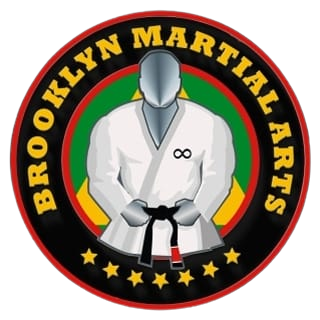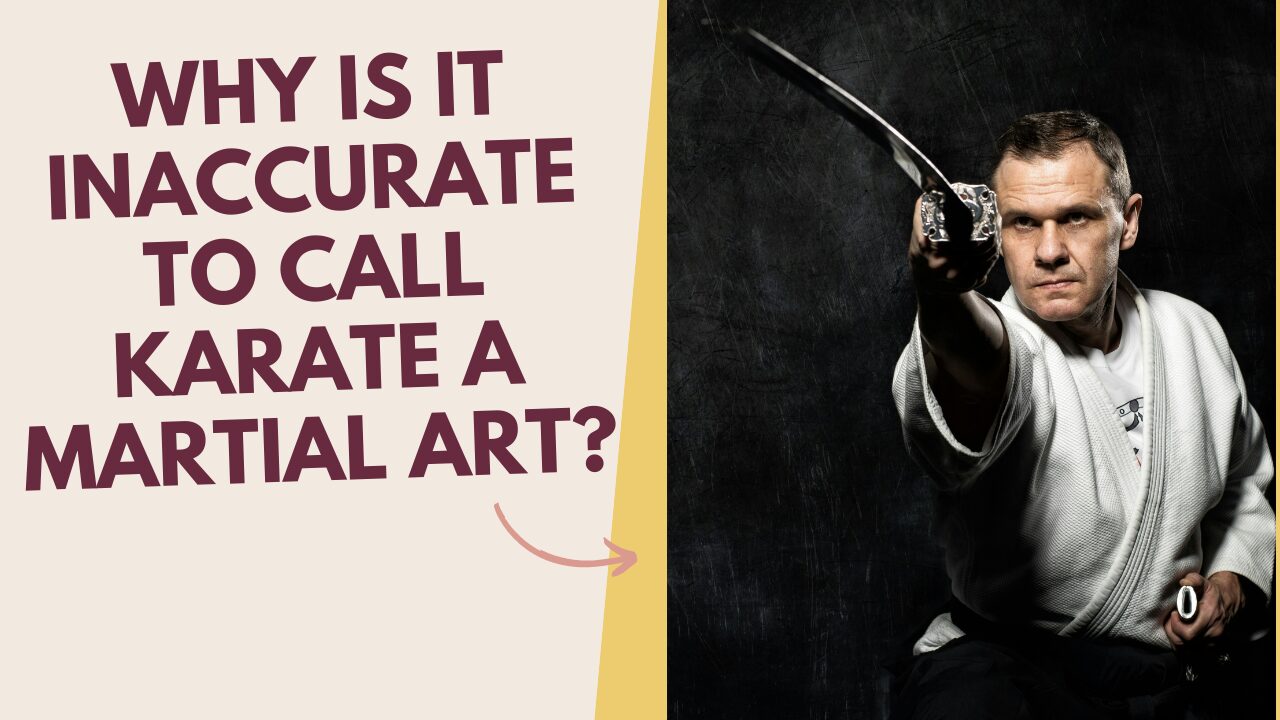Many may mistakenly label karate as a martial art, but upon closer examination, it becomes clear that this characterization is inaccurate. The distinction lies in the historical, philosophical, and cultural nuances that separate karate from traditional martial arts.
As you explore the intricacies of karate’s origins and principles, you will gain a deeper understanding of why it defies the conventional classification as a martial art and how it has evolved into a unique discipline with its own distinct identity.
Key Takeaways
- Karate’s origins and cultural influences are a fusion of Okinawan ‘te’ and Chinese martial arts.
- The philosophical principles of balance, respect, and perseverance shape both the practice of karate and one’s character in life.
- Karate continues to evolve and adapt to modern times, dispelling myths of obsolescence.
- Karate offers a comprehensive fitness regimen and valuable self-defense training, with techniques taught in classes essential in real-life situations.
Historical Origins of Karate
The historical origins of karate can be traced back to the Ryukyu Kingdom in what’s now Okinawa, Japan. With its roots firmly planted in Okinawan culture, karate also bears the imprint of Chinese influence. During the ancient Ryukyu Kingdom, trade and cultural exchange with China were common, leading to the infusion of Chinese martial arts into the local fighting techniques practiced in Okinawa. This influence is evident in the forms, techniques, and philosophical principles of karate.
The distinct Okinawan roots of karate are deeply embedded in its development. The indigenous martial arts of Okinawa, known as ‘te,’ provided the foundation for what would later evolve into karate. Over time, these local practices were enriched by the introduction of Chinese martial arts, particularly from the Fujian province. The amalgamation of Okinawan ‘te’ and Chinese martial arts gave birth to what we now recognize as karate. This fusion not only shaped the physical aspects of karate but also influenced its spiritual and philosophical dimensions, making it a unique and dynamic martial art.
Philosophical Principles of Karate
Embedded in the development of karate are its philosophical principles, which are deeply influenced by the amalgamation of Okinawan ‘te’ and Chinese martial arts. Karate isn’t merely a physical discipline; it’s a way of life deeply rooted in Eastern philosophy. The philosophical principles of karate shape not only the way you move and fight but also the way you live and perceive the world around you.
-
Balance: Karate teaches you the importance of balance, not only in physical movements but also in life. It emphasizes the need to find harmony between mind, body, and spirit, promoting a balanced approach to all aspects of life.
-
Respect: Central to the philosophy of karate is the value of respect. You learn to respect your opponents, your instructors, and yourself. This principle extends beyond the dojo, teaching you to respect others and the environment.
-
Perseverance: Karate instills in you the virtue of perseverance. Through rigorous training and discipline, you learn to push past your limits, both physically and mentally, fostering a resilient and determined mindset.
These philosophical principles serve as the foundation of karate, shaping not only your abilities as a martial artist but also your character and outlook on life.
Cultural Influences on Karate Practice
Cultural influences significantly shape the practice of karate, impacting its techniques, rituals, and values. Japanese influences have left a profound mark on karate, particularly in its training methods. The concept of kihon, or basics, emphasizes the repetition of fundamental techniques, reflecting the Japanese value of mastery through discipline and diligence. Kata, the prescribed patterns of movements, also bear the imprint of Japanese influence, embodying the traditional Japanese aesthetics of precision, grace, and fluidity.
On the other hand, Okinawan traditions have contributed to the unique belt ranking system in karate. Originally, there were only three belt colors – white, brown, and black – which reflected the simplicity and practicality of Okinawan culture. Over time, additional belt colors were introduced, aligning with the Western concept of progression and achievement. However, the underlying ethos of humility, respect, and continuous self-improvement remains deeply rooted in Okinawan karate traditions.
Distinctive Techniques in Karate Training
When training in karate, you’ll learn a variety of striking techniques that are unique to this martial art. These techniques focus on using different parts of the body to deliver powerful and precise blows.
Additionally, you’ll also be taught defensive moves that are designed to protect you from attacks and counter your opponent’s movements.
Karate Striking Techniques
Karate striking techniques are essential components of karate training, emphasizing precision, power, and speed in executing various strikes. To master these techniques, you must focus on:
-
Body Alignment: Align your body correctly to ensure maximum power and precision in your strikes. This involves maintaining the proper posture and positioning of your limbs to generate force efficiently.
-
Breath Control: Mastering the coordination of your breath with each strike is crucial for maximizing power and speed. Controlled breathing not only enhances your physical performance but also promotes mental focus and concentration.
-
Impact Points: Understanding the specific target areas for each strike is paramount. Developing the ability to accurately hit these points with precision can significantly elevate the effectiveness of your techniques.
Defensive Karate Moves
After honing your striking techniques with a focus on body alignment, breath control, and impact points, it’s time to delve into the realm of defensive karate moves. In karate, defensive moves are crucial for protecting yourself from potential attacks. Techniques such as blocking, parrying, and evasive footwork are fundamental in thwarting incoming strikes.
Understanding how to effectively utilize these karate techniques allows you to create openings for counterattacks while maintaining a strong defensive posture. Additionally, learning self-defense strategies in karate involves mastering techniques to neutralize grabs, chokes, and other close-range assaults.
Modern Perceptions of Karate
In contemporary society, many people mistakenly perceive karate as a static and outdated form of martial art. However, this perception is far from the truth. Karate has undergone significant evolutionary changes and continues to adapt to modern times, making it a relevant and effective martial art in today’s world.
-
Innovation: Contrary to the misconception that karate is stuck in the past, modern practitioners are constantly innovating and refining techniques to make them more effective in real-life situations. The art continues to evolve to meet the needs of today’s practitioners.
-
Fitness and Wellness: Karate isn’t just about self-defense; it also offers a comprehensive fitness regimen that promotes physical health and mental well-being. The practice of karate can help individuals develop discipline, focus, and resilience, which are valuable attributes in modern society.
-
Competitive Sport: Many people are unaware of karate’s presence as a competitive sport in international competitions such as the Olympics. It’s a dynamic and evolving sport that requires athletes to adapt and innovate their techniques to outperform their opponents.
These factors highlight the modern relevance of karate, dispelling the myths of its obsolescence and showcasing its continued significance in today’s world.
Karate’s Role in Self-Defense and Fitness
Despite the misconception that karate is outdated, its role in self-defense and fitness is a testament to its continued relevance and adaptability in modern society.
Karate isn’t just about learning how to punch and kick; it also provides valuable self-defense training. The techniques taught in karate classes can be essential in real-life situations, equipping you with the skills to protect yourself and others if necessary. The focus on discipline and situational awareness in karate also contributes to effective self-defense strategies.
Moreover, karate offers significant benefits in terms of physical conditioning. The rigorous training involved in karate helps improve strength, flexibility, and cardiovascular endurance. The katas, or forms, practiced in karate require precise and controlled movements, which contribute to overall body coordination and balance. The repetitive nature of training in karate also aids in muscle memory and reflex development, essential components of physical fitness and self-defense.
Frequently Asked Questions
Is Karate Only for Self-Defense or Can It Also Be Used for Fitness and Overall Well-Being?
Karate is not only for self-defense but also beneficial for fitness and mental discipline. It can be a great activity for kids, promoting overall well-being. Its benefits extend beyond just self-defense and are great for fitness.
What Are Some Common Misconceptions About the Philosophical Principles of Karate?
Misconceptions about the philosophical principles of karate often overlook its emphasis on discipline, respect, and self-improvement. Beyond combat, karate promotes fitness benefits, cultural influence, and a holistic approach to personal development.
How Has the Cultural Influence on Karate Practice Evolved Over Time?
Over time, cultural evolution has impacted karate practice, blending traditional practices with modern influences. This fusion has shaped the art’s techniques, philosophy, and even uniforms, reflecting a dynamic and diverse cultural heritage.
Are There Any Modern Misconceptions or Stereotypes About Karate That Have Impacted Its Perception?
Modern misconceptions and stereotypes about karate, influenced by media, have impacted its perception. The historical origins of karate as a form of self-defense and discipline have been overshadowed by sensationalized portrayals in popular culture.
What Sets Karate’s Training Techniques Apart From Other Martial Arts?
Karate’s training techniques set it apart from other martial arts. Its focus on physical conditioning and mental discipline distinguishes it. Traditional techniques blend seamlessly with modern adaptations, creating a well-rounded and effective approach to training.
Conclusion
So, the next time you hear someone refer to karate as just a martial art, you can educate them on its rich history, philosophical principles, cultural influences, distinctive techniques, and its role in self-defense and fitness.
Karate is more than just a fighting technique; it’s a way of life that encompasses physical, mental, and spiritual development.

